September 2015
Our Little Allie 1895-1906
30 09 15 17:29 Filed in: Alice

Late July 2007, on a clear winters day in Chiltern, a small Northern Victorian town I found myself standing by my great aunt’s graveside. Alice Martha Coates died on the 8th of October 1906, aged eleven and a half.
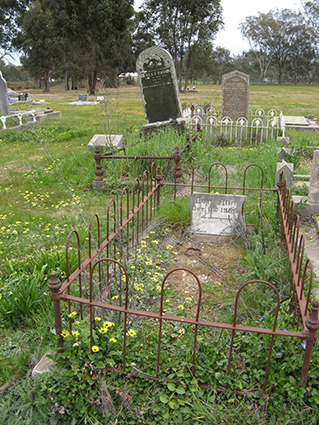
Thomas and Tessa had just been married at Nagambie and we were heading up the Hume Highway for a little R & R with Anne and Ben in the vineyards of Rutherglen. As we approached the turn off to Chiltern, 38k past Wangaratta where my grandfather Alfred had lived as a boy, we decided to have an ‘explore’. We turned towards Chiltern and found ourselves in the historic main street, complete with restored shopfronts, antique shops and the Historical Society, open for business.
Margaret and I, aware that our mother had been named after her, had grown up hearing our grandfather talk in hallowed tones of ‘our little Allie’ who, in our childhood memories, was almost saint like. You must remember that Margaret and I had grown up on a diet of novels such as Little Women by Louisa May Alcott, one of our favourites. In this novel Beth March, a child almost too good to be true and therefore likely not long for this world dies a lingering but saintly death, nursed by her adoring older sister. Fertile imagination conjured up such scenes as we heard the stories of little Allie's death or held the remembrance badge portraying her as a pretty, serious child. Allie died at Chiltern but that was all I knew, so into the Historical Society to find out more.
The building was slightly musty, its walls covered in old photographs and fortunately for us, as is so often the case, it was staffed by an enthusiastic and knowledgable volunteer. Yes, he knew about Reverend Alfred Coates : We think he lived in this house and yes his youngest daughter died here. After rummaging in the filing cabinet we had the location of the grave in the Chiltern Cemetery and we were able to read a newspaper report on the well attended funeral. Alice had obviously been ill for several weeks and it was no doubt a big topic of conversation in the town, especially as she was the daughter of a much loved Pastor. Maybe other children in the town were also ill in those same weeks.
Who was Alice Martha Coates, our great aunt who died aged eleven?
Our grandfather’s parents were Alfred senior, a Methodist parson, and Emma. The church chose his positions and moved the family every three years, in their case throughout country Victoria. They had four children, Florence, Alfred (our grandfather), Alice and Arthur. The photographs below show Allie with her parents and their house in Chiltern.
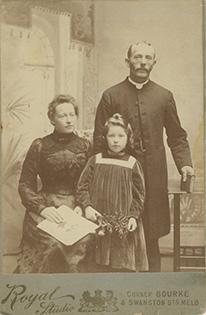
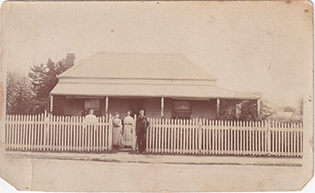
Allie died from the disease Diphtheria. This was a very common childhood disease of the times. Nowadays we have a vaccine for it, and antibiotics to treat it, but in those days it was one of the most feared childhood diseases.
It was highly contagious, and Emma and Alfred must have been very worried about the other children catching it. At first the symptoms are like those of a cold, but a horrible film, like a spider web, grows on the back of the throat or in the nose, and makes it hard to breathe. Alice must have had a really bad dose, because only one in ten people over five died from Diphtheria.
Armed with directions to the cemetery we politely extracted ourselves before we heard the complete history of Chiltern and stepped outside into the twenty-first century world. The cemetery is located outside the now small town, in slightly undulating country. It was chilly that day but this small country cemetery would have seen many blistering hot summer days. My thoughts turned to my grandfather: Allie’s older brother Alf, standing with his family at the graveside during the funeral. Some memories were no doubt already etched in his memory and others were forming These would combine to become the story of this tragic event passed down to us.
The little remembrance badge of Allie (shown below) lived in a wooden box on Alf’s desk. As children, we drank in the pathos of her beauty and goodness, amplified by the Victorian novels we read. The telling and retelling of little Allie’s story first by our grandfather and then our mother and aunt has helped Allie’s story retain its enduring poignancy, lifting it out of the commonplace into the world of idealised tragic heroines.
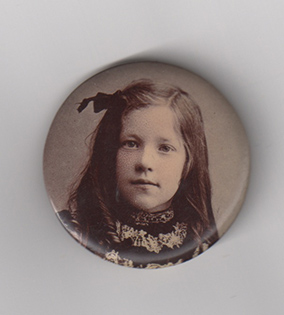
Allie’s grave is indeed in the Chiltern Cemetery, still intact. The modest headstone is there surrounded by the typical wrought iron fence of the era. The only flowers are those of the Cape Weed Daisies growing in abundance throughout the cemetery. The inscription is still legible and simply reads: Our Allie October 8th 1906. As I stood there the story suddenly seemed much more real. Allie was no longer the tragic heroine, but a little girl who died an unpleasant death, mourned by her distraught family.
I picked a small bunch of the Cape Weed daisies and placed it front of the headstone.
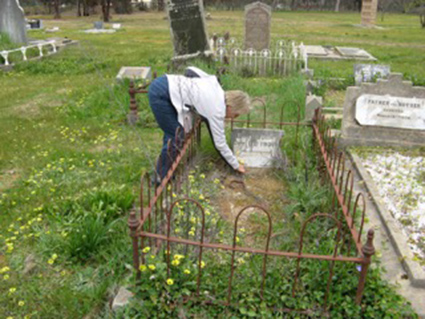
Comments
Lunchtimes at Primary School 1950s
23 09 15 17:07 Filed in: Children 1950s
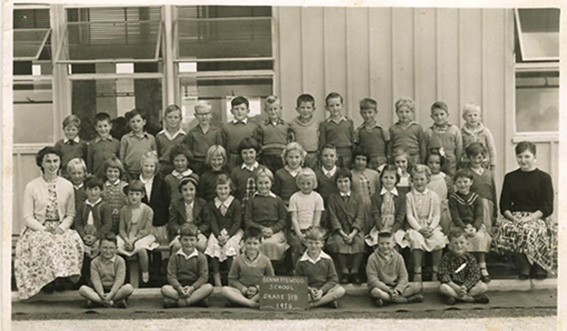
Both Sue and Margaret remember school games as going in crazes or fads. It was suddenly, as if by magic, swap card season. Nowadays you would explain a fad by noticing a particular advertising campaign, but that doesn’t account for the fads in the fifties and early sixties. Few people had television sets. No, clearly, it was magic!
Swap cards could be bought at the newsagent, and came in many special categories. (linens, pairs, “old fashioned”, horses).
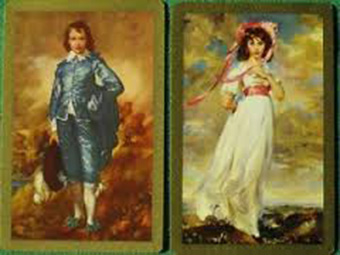
One had to know the value of particular kinds of cards in order to get a fair swap. Once a possible exchange had been agreed upon, each participant would leaf through her pack. This was closely watched by the other person who would ask the person to stop when a desirable candidate came into view. The process was then reversed to find a possible swap for it. Sometimes an exchange would take place, and sometimes not. Sue still has her swap cards.
Another season was hoops, made of cane.
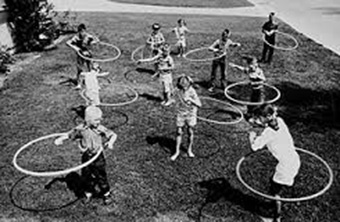
Scattered around the playground were individuals with gyrating hips, waists, necks, arms and legs. Neither Margaret nor Sue were very accomplished at it, but they participated, because that is what one did.
Another very individual fad was yo-yos.
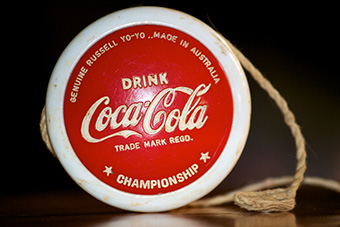
The best were coca cola ones, but there were others. Really clever people could do “around the world”, “walking the dog” etc.
Jacks, or knucklebones, which were actual joints of lambs they had eaten, were played in partners or groups. This was one of few games that we remember was played by both boys and girls.
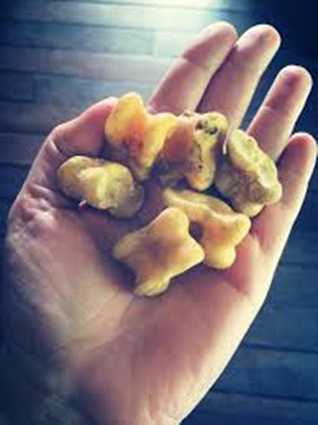
You had between one and five of them in your palm, and had to toss them up and catch them all on the back of your hand. We played this crouched or sitting on the ground.
The boys played alleys, or marbles.
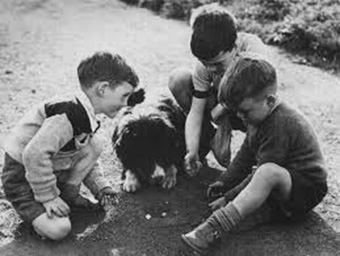

Marbles of different sorts had particular value. Bigger ones were called “tombollers”. There were cats eyes and other special ones. Playing involved risking your alley, as the winner of a game kept the loser’s alley. This didn’t seem to go in fads, presumably it was dependent on the weather, as it involved digging hollows in the dust. There was something called “dukes” involved. …. secret boys’ business. Alleys were kept in cloth bags, always home made.
Groups of girls did skipping.
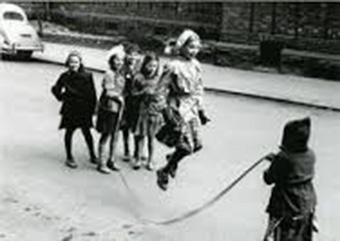
Presumably someone must have lugged a heavy rope to school for this. One person each end turned the rope and people would run in, timing their run with a skip and then jump until they missed and the heavy rope caught them on the leg. Margaret wasn't very good at this either, but Susan remembers her own skipping skills entirely differently. There were esoteric rhymes that went with skipping. Sue and Margaret both remember this one:
The big ship sailed on the Ally ally oh
The Ally ally oh, the Ally ally oh
The big ship sailed on the Ally ally oh
On the first day of September.
The captain said it would never never go
etc
Turns out it’s a traditional song, linked to the Manchester to Liverpool canal, which opened in the 1890s.
There was a shelter shed for each gender, for when it rained. It got packed then, but when it wasn’t raining you could play “pussy in the corner” which involved running across and jumping into the corners, up on the bench seats that ran around the inside walls.
Down the back of the oval were massive blackberry thickets. There were snakes and big rough boys there. Fights happened down there. Sometimes the boys built tunnels through the blackberries, through which brave people crawled, even girls. (Girls wore bare legs and dresses or skirts all year round.)
Wednesdays at Number Ten
23 09 15 15:41 Filed in: Explanatory Notes
In this post we are stepping back from our collection of FAMILY STORIES to write specifically about this site: its origins, our plans for it and a little about how to use it.
‘Recollections’ evolved from our desire to fill in the gaps. Its purpose is not only to tell the stories that make up our shared family history but to give the lives of the current and successive generations an historical context and a sense of their place in history.
We will sometimes give a snap shot of ‘the times’, and place the events that tell stories into an era or into an historical context. We hope this will round out the characters of our family and give a glimpse of the very different worlds in which our family has lived. Michael and Catherine Bourke of Limerick in Ireland were the first to arrive in Australia in the late 1830’s. The story begins there… but not our telling of it.
We were not the first family members to record family stories. In 1990 our mother, Alice Bourke and her sister, Marge Rostos, both in their late sixties, armed with a cassette tape recorder, sat together in Alice’s unit and remembered. The task they set themselves was to record all that they could of family stories, personalities and relationships from 1850 to 1950. By this time Alice was blind, and it was up to Marge to make notes and organise the structure of their reminiscences. The result was five hours of undifferentiated audio.
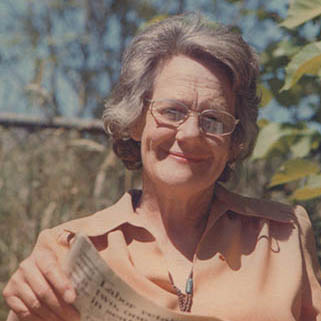
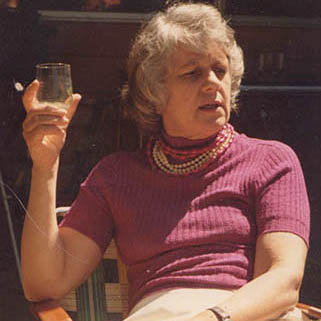
Alice (top photo) and Marge’s rememberings did not cover anything past our early childhood. They specifically passed the baton to “someone else” to tell the rest.
We are obedient and dutiful daughters.
Beginning in early 2015, we met nearly every Wednesday, feeling our way with the subject matter, unsure about the final structure and nervous about the emotions dredged up by childhood memories. Initially we worked towards the vague notion of a “website”.
The five hours of Alice and Marge’s tapes tended to shape all our decisions. For instance we couldn’t use the readily available simple, free software to build our site. Instead we had to embark on the massive task of learning to use a professional web site building program. We grew quite fond of Ryan, the man who produces Rapidweaver's on line tutorials, many of which we watched multiple times.
It seemed likely that it would be years worth of Wednesdays before we had enough material, and had learnt enough about using Rapidweaver to actually publish.
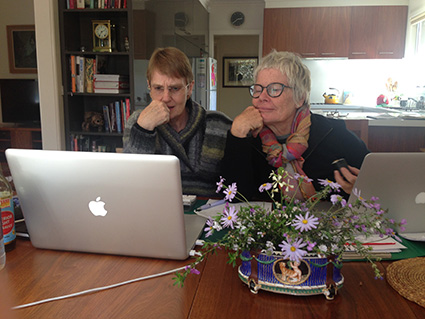
Photo by Aurelia Wild (fifth from the top in the 2000s section of the Whos’ Who chart)
And then there was the light bulb moment! We could write it as a blog.The idea of creating the site as an unfolding series of stories, in random order, was hugely liberating.
No longer were we trying to cram the square peg of our task into the round hole of the technology. No longer were we forced to deal with all the material at once, before we could get any of it out there.
No longer did we have to make difficult editorial decisions immediately, or work out how to navigate emotional mine fields, in advance.
Most information will be stored in the FAMILY STORIES section of our site. It can be navigated by date of posting, by category or by tags, which will be the names of people and places mentioned in that particular story. Some posts will focus right in on a detail, others will cover a broad sweep of history.
We have also created space for a PHOTO GALLERY and for other RESOURCES such as family letters, links to further information and other things as they arise.
The WHO’S WHO section is a quick guide to most of the people mentioned in the stories. It is laid out in generations, with groups of siblings separated by a space. It is not intended as a full on family tree, and cannot do more than fit that person into his or her generational time slot.
We may attempt some sort of family tree that shows relationships, but ours is not an Ancestor dot com task. Neither do we pretend to cover every single event, person, place…. some are too hard to research, some are just boring and some encroach on living people’s privacy.
The technology we are using stretches us! There will be things we would like to do that will be beyond us. For instance, at this point in time we still do not know which of several options we will use to make Alice and Marge’s five hours of tapes available.
We invite you, our readers, to use the comments section at the bottom of each post.
We welcome suggestions and feedback. At the bottom of every page of the website is a link to our Recollections email address. Click on it to email us. Our email address is [email protected].
We hope sometimes to have guest bloggers. For example, apart from setting up the RSS feed, we don’t know much about clever ways to alert you that a new post is up. We could learn, or… we can ask Michael (third from the top in the 1980s section of the Whos’ Who chart) to write about it it as a guest blogger.
We hope you will read our evolving family history as a series of intertwining stories originating in other parts of the world and continuing here in the new world, hence our choice of Logo. The Triquetra combines a number of interconnected loops that are the FAMILY STORIES. The loops combine as the stories do, to form the symbol and in our case the FAMILY HISTORY. The symbol is also known as the Trinity Knot and is of Celtic origin as are many of our ancestors.
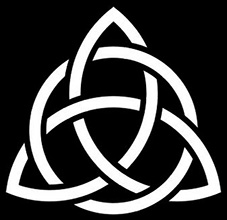
Now, on with the stories…..
‘Recollections’ evolved from our desire to fill in the gaps. Its purpose is not only to tell the stories that make up our shared family history but to give the lives of the current and successive generations an historical context and a sense of their place in history.
We will sometimes give a snap shot of ‘the times’, and place the events that tell stories into an era or into an historical context. We hope this will round out the characters of our family and give a glimpse of the very different worlds in which our family has lived. Michael and Catherine Bourke of Limerick in Ireland were the first to arrive in Australia in the late 1830’s. The story begins there… but not our telling of it.
We were not the first family members to record family stories. In 1990 our mother, Alice Bourke and her sister, Marge Rostos, both in their late sixties, armed with a cassette tape recorder, sat together in Alice’s unit and remembered. The task they set themselves was to record all that they could of family stories, personalities and relationships from 1850 to 1950. By this time Alice was blind, and it was up to Marge to make notes and organise the structure of their reminiscences. The result was five hours of undifferentiated audio.


Alice (top photo) and Marge’s rememberings did not cover anything past our early childhood. They specifically passed the baton to “someone else” to tell the rest.
We are obedient and dutiful daughters.
Beginning in early 2015, we met nearly every Wednesday, feeling our way with the subject matter, unsure about the final structure and nervous about the emotions dredged up by childhood memories. Initially we worked towards the vague notion of a “website”.
The five hours of Alice and Marge’s tapes tended to shape all our decisions. For instance we couldn’t use the readily available simple, free software to build our site. Instead we had to embark on the massive task of learning to use a professional web site building program. We grew quite fond of Ryan, the man who produces Rapidweaver's on line tutorials, many of which we watched multiple times.
It seemed likely that it would be years worth of Wednesdays before we had enough material, and had learnt enough about using Rapidweaver to actually publish.

Photo by Aurelia Wild (fifth from the top in the 2000s section of the Whos’ Who chart)
And then there was the light bulb moment! We could write it as a blog.The idea of creating the site as an unfolding series of stories, in random order, was hugely liberating.
No longer were we trying to cram the square peg of our task into the round hole of the technology. No longer were we forced to deal with all the material at once, before we could get any of it out there.
No longer did we have to make difficult editorial decisions immediately, or work out how to navigate emotional mine fields, in advance.
Most information will be stored in the FAMILY STORIES section of our site. It can be navigated by date of posting, by category or by tags, which will be the names of people and places mentioned in that particular story. Some posts will focus right in on a detail, others will cover a broad sweep of history.
We have also created space for a PHOTO GALLERY and for other RESOURCES such as family letters, links to further information and other things as they arise.
The WHO’S WHO section is a quick guide to most of the people mentioned in the stories. It is laid out in generations, with groups of siblings separated by a space. It is not intended as a full on family tree, and cannot do more than fit that person into his or her generational time slot.
We may attempt some sort of family tree that shows relationships, but ours is not an Ancestor dot com task. Neither do we pretend to cover every single event, person, place…. some are too hard to research, some are just boring and some encroach on living people’s privacy.
The technology we are using stretches us! There will be things we would like to do that will be beyond us. For instance, at this point in time we still do not know which of several options we will use to make Alice and Marge’s five hours of tapes available.
We invite you, our readers, to use the comments section at the bottom of each post.
We welcome suggestions and feedback. At the bottom of every page of the website is a link to our Recollections email address. Click on it to email us. Our email address is [email protected].
We hope sometimes to have guest bloggers. For example, apart from setting up the RSS feed, we don’t know much about clever ways to alert you that a new post is up. We could learn, or… we can ask Michael (third from the top in the 1980s section of the Whos’ Who chart) to write about it it as a guest blogger.
We hope you will read our evolving family history as a series of intertwining stories originating in other parts of the world and continuing here in the new world, hence our choice of Logo. The Triquetra combines a number of interconnected loops that are the FAMILY STORIES. The loops combine as the stories do, to form the symbol and in our case the FAMILY HISTORY. The symbol is also known as the Trinity Knot and is of Celtic origin as are many of our ancestors.

Now, on with the stories…..
Jim's Schooling
16 09 15 13:38 Filed in: Jim
Our father, Jim, who died quite young, did not tell us much about his early life. We remember some of his stories, but we also rely on information about Jim's early life, as retold to us by our mother, Alice.
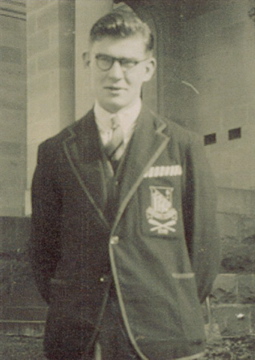
Jim in his Xavier uniform.
Stories of Jim’s childhood in Koroit have largely been lost, but he went to the Catholic Primary School there, and spoke of the strict nuns, his teachers, walking up and down between the rows of desks, wielding a ruler.
We can picture him, rushing home after school, calling to the family's protective Airedale dog. Often he was pursued by the non-Catholic kids and would call to them from the safety of the gate, “Proddy dogs, jump like frogs, in and out the water.”
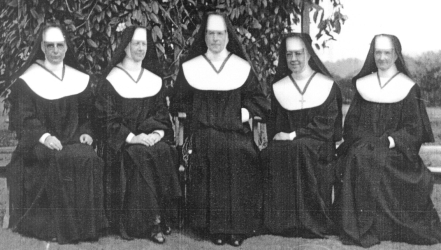
Sisters of the Good Samaritan of the Order of St Benedict.

St Patricks Primary School, Koroit, today.
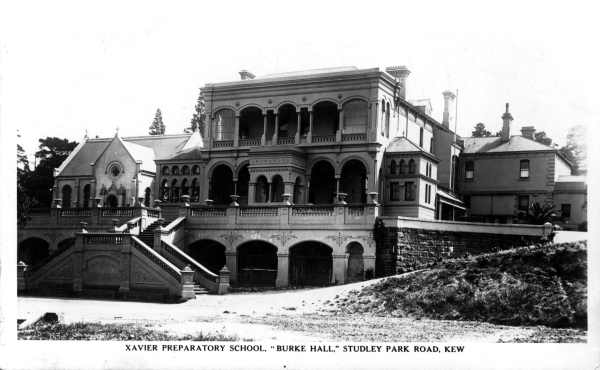
Burke Hall, Xavier Preparatory School, Kew.
In 1932, Jim was sent to boarding school in Kew. Initially he lived at Burke Hall, the junior school of Xavier College.
We have only snippets of information about these years. But it doesn’t take much imagination to picture his life.
Jim would have arrived at the big city school, aged just eleven, with the weight of family expectations to follow his father into a career in medicine. Jim had poor eyesight and his interests lay with practical skills.
To make matters worse, Jack, his older, more academically successful brother was already at the school, fulfilling parental expectations.
Alice used to say “Jim should have been sent to a tech school”. In his later years, Jim spoke with loathing of the Jesuit priests, known for their strict discipline and preference for academia. He must have hated the long hours of study in cold study halls.
Susan and Margaret remember a time during the annual camping holiday when, disgusted by the gluttony of toast eating competitions, Jim made them eat their toast as he had been taught to at Xavier, placing a lump of butter and a spoon of jam on the plate, and spreading each individual, carefully cut mouthful. His had been a very regulated life.
As an older student, he was particularly successful in the rowing team. His name is on an honour board at Xavier College, as “ the stroke” in the prestigious rowing eight. He participated in the “Head of the River” regatta, the oldest schoolboy rowing event in the world dating back to 1868.
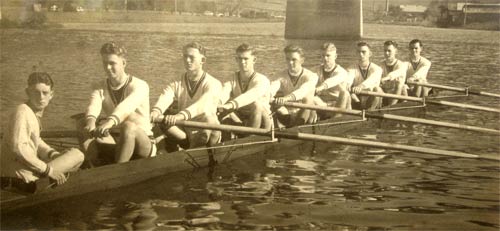

Jim in his Xavier uniform.
Stories of Jim’s childhood in Koroit have largely been lost, but he went to the Catholic Primary School there, and spoke of the strict nuns, his teachers, walking up and down between the rows of desks, wielding a ruler.
We can picture him, rushing home after school, calling to the family's protective Airedale dog. Often he was pursued by the non-Catholic kids and would call to them from the safety of the gate, “Proddy dogs, jump like frogs, in and out the water.”

Sisters of the Good Samaritan of the Order of St Benedict.

St Patricks Primary School, Koroit, today.

Burke Hall, Xavier Preparatory School, Kew.
In 1932, Jim was sent to boarding school in Kew. Initially he lived at Burke Hall, the junior school of Xavier College.
We have only snippets of information about these years. But it doesn’t take much imagination to picture his life.
Jim would have arrived at the big city school, aged just eleven, with the weight of family expectations to follow his father into a career in medicine. Jim had poor eyesight and his interests lay with practical skills.
To make matters worse, Jack, his older, more academically successful brother was already at the school, fulfilling parental expectations.
Alice used to say “Jim should have been sent to a tech school”. In his later years, Jim spoke with loathing of the Jesuit priests, known for their strict discipline and preference for academia. He must have hated the long hours of study in cold study halls.
Susan and Margaret remember a time during the annual camping holiday when, disgusted by the gluttony of toast eating competitions, Jim made them eat their toast as he had been taught to at Xavier, placing a lump of butter and a spoon of jam on the plate, and spreading each individual, carefully cut mouthful. His had been a very regulated life.
As an older student, he was particularly successful in the rowing team. His name is on an honour board at Xavier College, as “ the stroke” in the prestigious rowing eight. He participated in the “Head of the River” regatta, the oldest schoolboy rowing event in the world dating back to 1868.

